The results are in.
Everyone can breathe a sigh of relief, and also applaud themselves for helping the Lower Valley reach an amazing 10th place for “Most Species” in a steep competition that involved 68 of some of the largest cities in the world!
YAY, all the Texas Master Naturalists who took up the call and helped contribute to the 2018 challenge! In all, more than 50 Texas Master Naturalists were in the count of the 195 people who participated from the Lower Rio Grande Valley’s four counties: Cameron, Hidalgo, Star and Willacy.
Special applause goes to those who aren’t necessarily photographers, critter lovers, plant passionates and techy-mongers who took the time to log onto iNaturalist.org to give it their best shot to join the cause, support the team, stand up and be counted! Some may have uploaded just one entry, but every entry and participant counted. YAY, TEAM!
It was four strenuous days of photographing and uploading hundreds of photos, and then another three days trying to identify and verify entries on the iNaturalist website.
The first two days into the challenge, I didn’t even leave my property and had nearly 200 species photographed. That was counting species even I might be tempted to call weeds. I hopped on my scooter on the third day and found nearly 30 more species by travelling around our country mile “block.” With permission, I rode along the farmer’s field along the edge of the resaca marsh and wooded area and photographed many plants I’d only seen in books.
I spent the last day of the challenge with fellow RGVCTMN Eileen Mattei for a Beach Day. We walked along the road, behind the dunes and back before we even hit the beach at Boca Chica. Everywhere we looked, there was something unique to photograph. By time we left the beach, we had more than two hundred photos.
The challenge rated three levels of competition: most observations (of nature), most individual species and most people participating.
The overall winner of the 2018 City Nature Challenge was the San Francisco Bay Area placing tops in all three categories: most observations: 41,737; most species found: 3,211; and most participants: 1,532.
Closer to home, it was steep competition comparing the four Lower Rio Grande Valley counties with the populations of the five top contenders like San Francisco Bay Area; Dallas/Fort Worth; San Diego; Klang Valley, Greater Kuala Lumpur, Malaysia; and Washington, D.C.
Significantly, the total observations from the Lower Rio Grande Valley reached 8,760; number of species, 1,660.
Of the Top Ten “Most Of” earners for the LRGV, six were Texas Master Naturalists!
The two top spots for most observations went to two members of our sister chapter, South Texas Border Chapter.
Here are the TMNs as they placed in the LRGV Top Ten Most Observations category:
First — Joseph Conners, South Texas Border Chapter, Pharr
Second — Seth Welliver, STBC
Third — Anita Westervelt, Rio Grande Valley Chapter, San Benito
Sixth — Perly Bethancort, STBC
Seventh — Christina Mild, RGVCTMN
Tenth — Chuck Cornell, RGVCTMN
For a complete list of participants, habitat diversity activity and some amazing photography, start with this link:
https://www.inaturalist.org/projects/city-nature-challenge-2018-lower-rio-grande-valley
Here are a few of my Most Interesting discoveries — things I probably would have missed had I not been concentrating on a project that included Most Diversity. I was focused on noticing things.
This first photo is probably my favorite catch. I hope it’s eventually identified. I think it’s some sort of sea creature that died when the water ebbed out of a tidal basin behind the dunes at Boca Chica. I could be totally wrong. In real life, that’s what it looked like – like some sort of sea mushrooms.
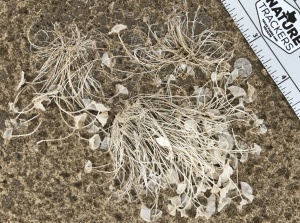
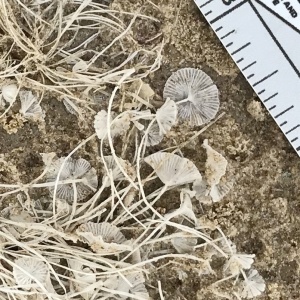
This was a fun photo to take, and to see that I am still able to pan with a hand-held long lens!
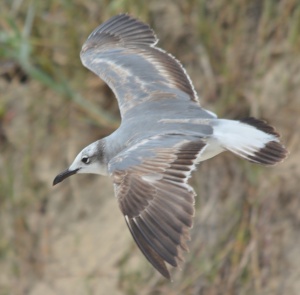
Amazing shot — it’s always amazing when you see a flash out of the corner of your eye and are able to capture it on film, or rather pixels. Landing gear any pilot would be proud of on this Mexican Black-bellied Whistling Duck.
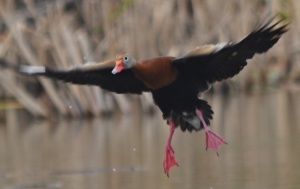
What luck to capture one of the resaca nutria sunbathing on the shore. He was the size of a small bear, which is what initially caught my attention. He’s well fed on cattails.
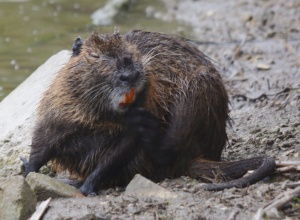
These two photos came out fun — Ghost Angel in Flight and Something from the Dark Side.
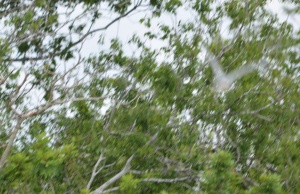
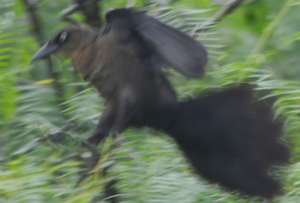
The grackle shot was counted; I didn’t submit the Ghost Egret photo.
Capturing this dune critter was quite a treat. We felt we should buy it dinner, so accommodating was it with each of us getting closer and closer so we could get a detailed shot.
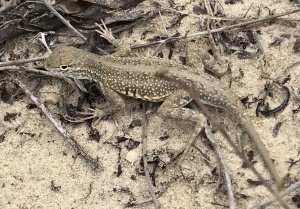
Dune flora
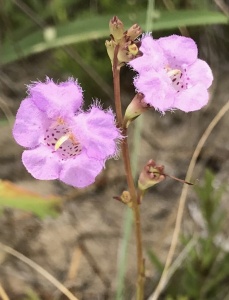
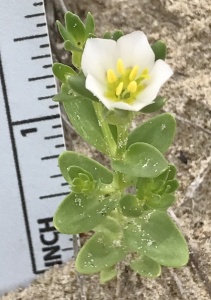
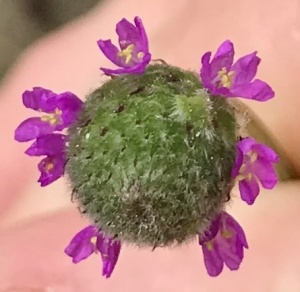
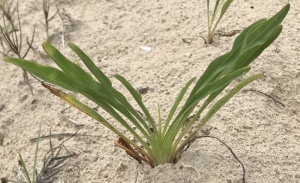
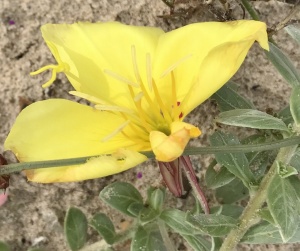
I thought it would be relatively easy to search for identification in my beach books. It was not. If anyone can help identify any of the dune and beach life, I’d be very grateful.
The next photo reminds me of Peacock Feathers stuck in the sand. You’d think that would be easy to find searching through books page by page.
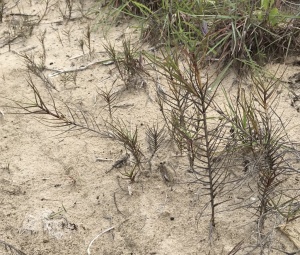
And this lovely Dune Plant goes unidentified as well, unfortunately.
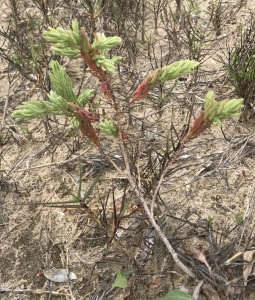
Sea shells, sea weed and sea beans
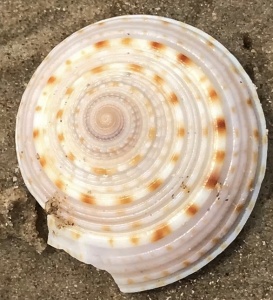
This unusual shaped, lavender-hued shell is not in my slim seashore book.
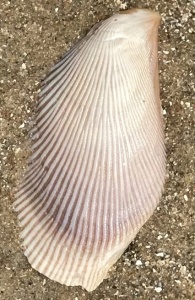
Seaweed, someone has said. Or Hardnose Skates, Family, Rajidae
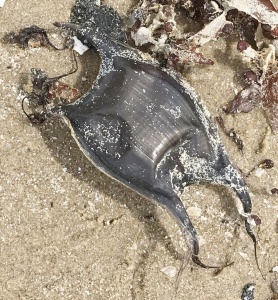
Goose barnacles on a Matchbox Sea Bean, Entada phaseoloides.
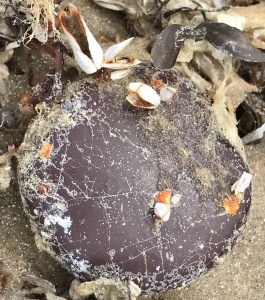
iNaturalist.org is richer for having the Lower Valley enter the challenge. Many of us Texas Master Naturalists enjoyed the challenge to add to its database. iNaturalist.org is an interesting tool for those interested in the Valley’s habitat — bugs, birds, animals, plants, fungi, scat . . . . If you can shoot it and upload it, someone is likely to know what you’ve got and help identify it.
If you missed out on this challenge and want to know how to use www.iNaturalist.org, there are a number of chapter members who would be glad to help you. Let us know!
The excitement of the hunt. The thrill of discovery. Mysteries to be solved. Good story.
Thanks, and yes, all of that! We’re a good team! We do have some really good Road Trips!
This was another wonderful story. Even though I was out of state during the Nature Challenge, through watching the posts go up and the numbers keep changing, and the photos which folks took during this event, I still felt in some small way that I was part of it. We recently went to SPI and I took photos of lots of beach plants and life. I, too, had a heck of a time identifying them afterwards. CM helped with some of them, but some are still just entered as, “Plants”. So much to learn!
I agree — so much to learn. We need a special course on beach/dune plants. We need to find a beach/dune expert who would be willing to teach us. It’s very difficult looking at a picture in a book that resembles the plants on the day that I saw them. Work on that, will you? Beach and Dune School. I’d certainly attend!